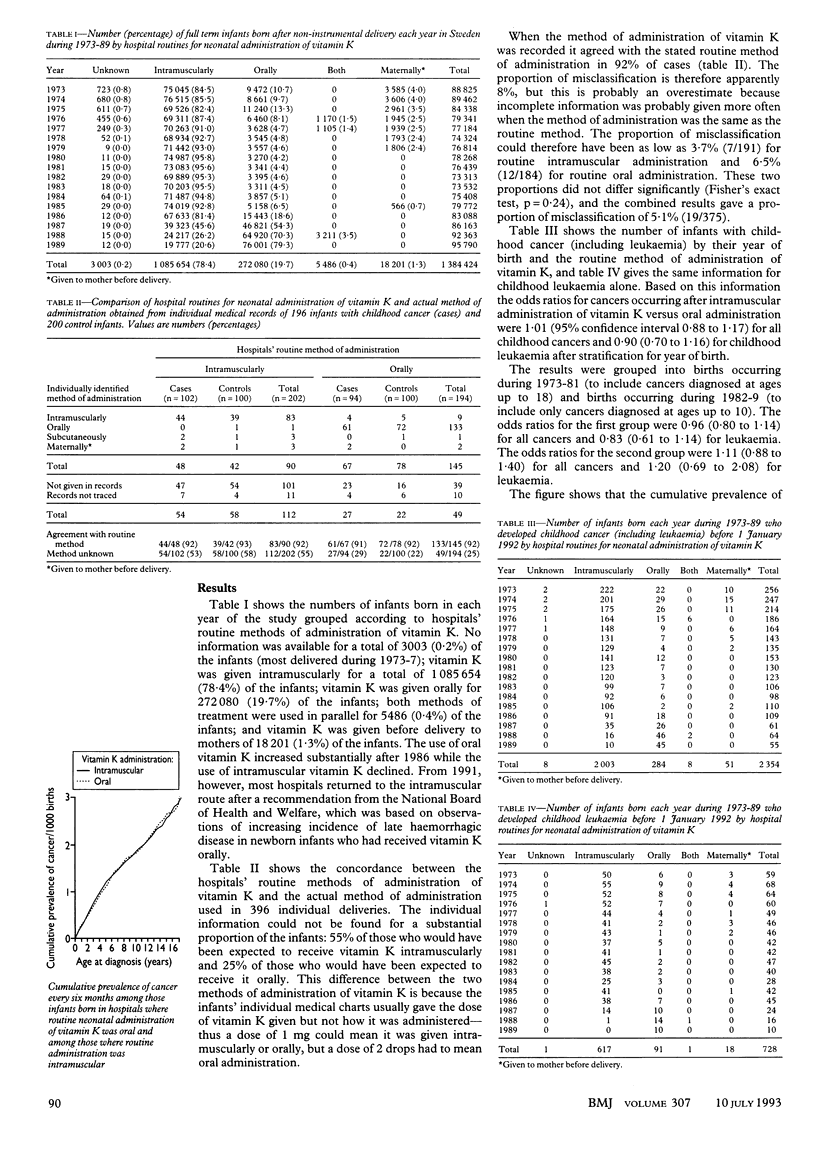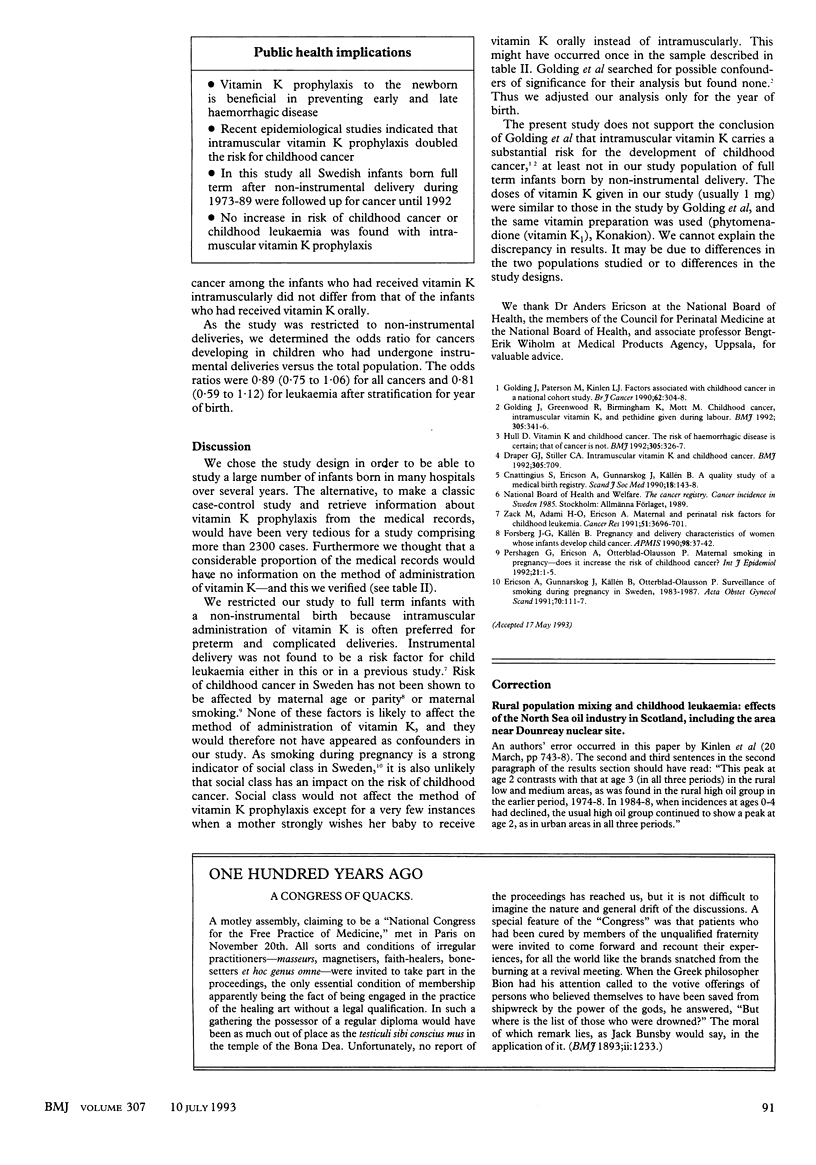Abstract
OBJECTIVES--To investigate whether childhood cancer is associated with intramuscular administration of vitamin K to newborn infants. DESIGN--Routines for administration of vitamin K to infants born after normal deliveries during 1973-89 were obtained from maternity hospitals. Occurrence of cancer up to the end of 1991 was identified by comparing these records with the national cancer registry. Adherence to the routine method of administering vitamin K was checked with the medical records of a sample of 396 infants (196 who had developed childhood cancer and 200 controls). SETTING--All maternity hospitals in Sweden. SUBJECTS--1,384,424 full term infants born after non-instrumental deliveries, 1,085,654 of whom were born in units where vitamin K was routinely given by intramuscular injection and 272,080 of whom were born where it was given orally. MAIN OUTCOME MEASURES--Odds ratios for cancer after intramuscular administration of vitamin K versus oral administration after stratification for year of birth. RESULTS--Adherence to routine method of administering vitamin K was 92% in the 235 cases where individual information could be found. The risk of cancer after intramuscular administration of vitamin K was not elevated compared with that after oral administration: odds ratios of 1.01 (95% confidence interval 0.88 to 1.17) for all childhood cancers and 0.90 (0.70 to 1.16) for childhood leukaemia. CONCLUSIONS--The alleged association between intramuscular vitamin K prophylaxis to newborn infants and childhood cancer could not be verified in the present study of full term infants born after non-instrumental delivery.
Full text
PDF


Selected References
These references are in PubMed. This may not be the complete list of references from this article.
- Cnattingius S., Ericson A., Gunnarskog J., Källén B. A quality study of a medical birth registry. Scand J Soc Med. 1990 Jun;18(2):143–148. doi: 10.1177/140349489001800209. [DOI] [PubMed] [Google Scholar]
- Draper G. J., Stiller C. A. Intramuscular vitamin K and childhood cancer. BMJ. 1992 Sep 19;305(6855):709–711. doi: 10.1136/bmj.305.6855.709. [DOI] [PMC free article] [PubMed] [Google Scholar]
- Forsberg J. G., Källén B. Pregnancy and delivery characteristics of women whose infants develop child cancer. A study based on registry information. APMIS. 1990 Jan;98(1):37–42. doi: 10.1111/j.1699-0463.1990.tb00999.x. [DOI] [PubMed] [Google Scholar]
- Golding J., Greenwood R., Birmingham K., Mott M. Childhood cancer, intramuscular vitamin K, and pethidine given during labour. BMJ. 1992 Aug 8;305(6849):341–346. doi: 10.1136/bmj.305.6849.341. [DOI] [PMC free article] [PubMed] [Google Scholar]
- Golding J., Paterson M., Kinlen L. J. Factors associated with childhood cancer in a national cohort study. Br J Cancer. 1990 Aug;62(2):304–308. doi: 10.1038/bjc.1990.283. [DOI] [PMC free article] [PubMed] [Google Scholar]
- Hull D. Vitamin K and childhood cancer. BMJ. 1992 Aug 8;305(6849):326–327. doi: 10.1136/bmj.305.6849.326. [DOI] [PMC free article] [PubMed] [Google Scholar]
- Pershagen G., Ericson A., Otterblad-Olausson P. Maternal smoking in pregnancy: does it increase the risk of childhood cancer? Int J Epidemiol. 1992 Feb;21(1):1–5. doi: 10.1093/ije/21.1.1. [DOI] [PubMed] [Google Scholar]
- Zack M., Adami H. O., Ericson A. Maternal and perinatal risk factors for childhood leukemia. Cancer Res. 1991 Jul 15;51(14):3696–3701. [PubMed] [Google Scholar]


